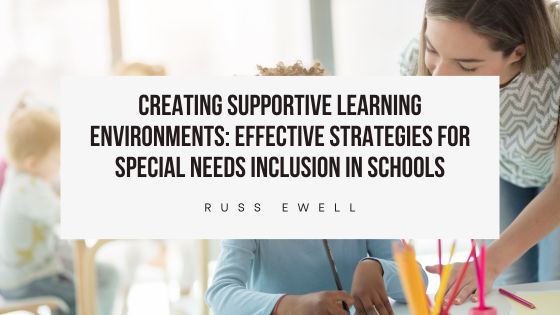Ensuring an inclusive and supportive learning environment for students with special needs is essential for their academic and personal development. Inclusion not only benefits students with disabilities but also fosters a culture of empathy, collaboration, and diversity among all learners. Implementing effective strategies can help educators create classrooms that cater to the diverse needs of every student.
Understanding Special Needs Inclusion
Special needs inclusion refers to the practice of integrating students with disabilities into general education classrooms while providing them with the necessary support to succeed. Inclusion is not just about physical presence; it requires meaningful participation, access to appropriate resources, and an adaptable learning environment that meets individual needs.
Strategies for an Inclusive Classroom
1. Differentiated Instruction
Differentiated instruction involves modifying teaching methods, materials, and assessments to accommodate diverse learning styles. Educators can use a mix of visual, auditory, and kinesthetic teaching techniques to ensure all students grasp key concepts. Providing alternative assignments or extended time on tasks can also support individual learning needs.
2. Collaborative Teaching
Co-teaching models, where general education and special education teachers work together, can enhance inclusion. This partnership allows for more individualized support and ensures that all students receive the necessary assistance. Collaborative teaching also benefits teachers by fostering professional growth and improving instructional practices.
3. Classroom Adaptations and Assistive Technology
Making small modifications to the classroom environment can significantly impact student success. Flexible seating arrangements, quiet spaces, and visual schedules help create a structured and accommodating learning atmosphere. Additionally, assistive technology such as speech-to-text software, audiobooks, and adaptive devices can support students with communication and mobility challenges.
4. Social and Emotional Support
Building a supportive classroom culture requires addressing the social and emotional needs of students with special needs. Educators can implement peer buddy systems, social skills training, and conflict resolution strategies to promote positive interactions. Encouraging open discussions about diversity and disabilities can also foster empathy and reduce stigma.
5. Individualized Education Plans (IEPs) and 504 Plans
IEPs and 504 plans provide tailored support for students with disabilities by outlining specific accommodations and goals. Teachers should actively collaborate with special education teams, parents, and students to ensure these plans are effectively implemented. Regular reviews and adjustments help maintain progress and address evolving needs.
6. Professional Development for Educators
Ongoing training and professional development equip teachers with the skills to implement inclusive practices effectively. Workshops on differentiated instruction, behavioral management, and assistive technology can enhance educators’ ability to support students with special needs.
Building an Inclusive School Community
Inclusion extends beyond the classroom; it requires a school-wide commitment. Administrators can promote inclusivity by establishing clear policies, encouraging parent involvement, and fostering partnerships with specialists and support organizations. Celebrating diversity through events, awareness programs, and inclusive extracurricular activities further strengthens the school community.
Conclusion
Creating a supportive learning environment for students with special needs requires a multifaceted approach that includes instructional strategies, emotional support, and institutional commitment. By embracing inclusion, schools empower all students to reach their full potential while cultivating a culture of acceptance and understanding. Implementing these effective strategies ensures that every learner has the opportunity to thrive in an inclusive educational setting.

